THE TETRAMORPHOS
The term "Tetramorph" from the Greek "tetra", fourand "morphé", formis used to refer to a set of four elements or forms.
In the Christian iconographic tradition, the tetramorph refers to the following set of beings: a lion, an ox, an eagle and a winged man, which are often found around the throne of God. and who are traditionally identified with the four evangelists, Matthew, Mark, Luke and John, as part of the heavenly court and praising and glorifying God.
BIBLICAL ORIGINS
These four forms have their first biblical basis in the Bible in a vision of the prophet Ezekiel in which he describes the four living ones:
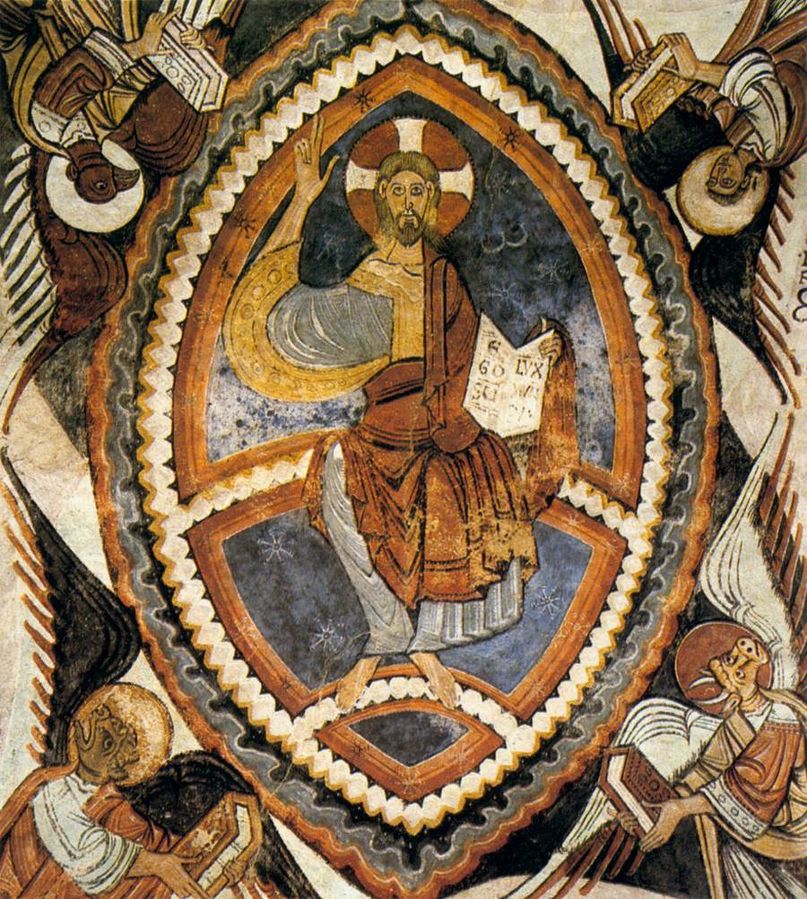
Royal Pantheon of San Isidoro de León,
s. XII
"There was in the center as it were a form of four beings whose appearance was as follows: they were in human form. They had each four faces, and four wings each. His legs were straight and the soles of his feet were like the sole of an ox's hoof, and they shone like the gleam of burnished bronze. Under their wings were human hands turned in four directions, as were their faces and their wings, those of the four of them. Their wings were joined one to the other; they did not turn as they walked; each one marched straight ahead. As for the shape of their faces, it was a man's face, and the four had the face of a lion on the right, the four had the face of a bull on the left, and the four had the face of an eagle. (Ezekiel 1:5-10).
Further on, St. John describes them in his visions of the Apocalypse:
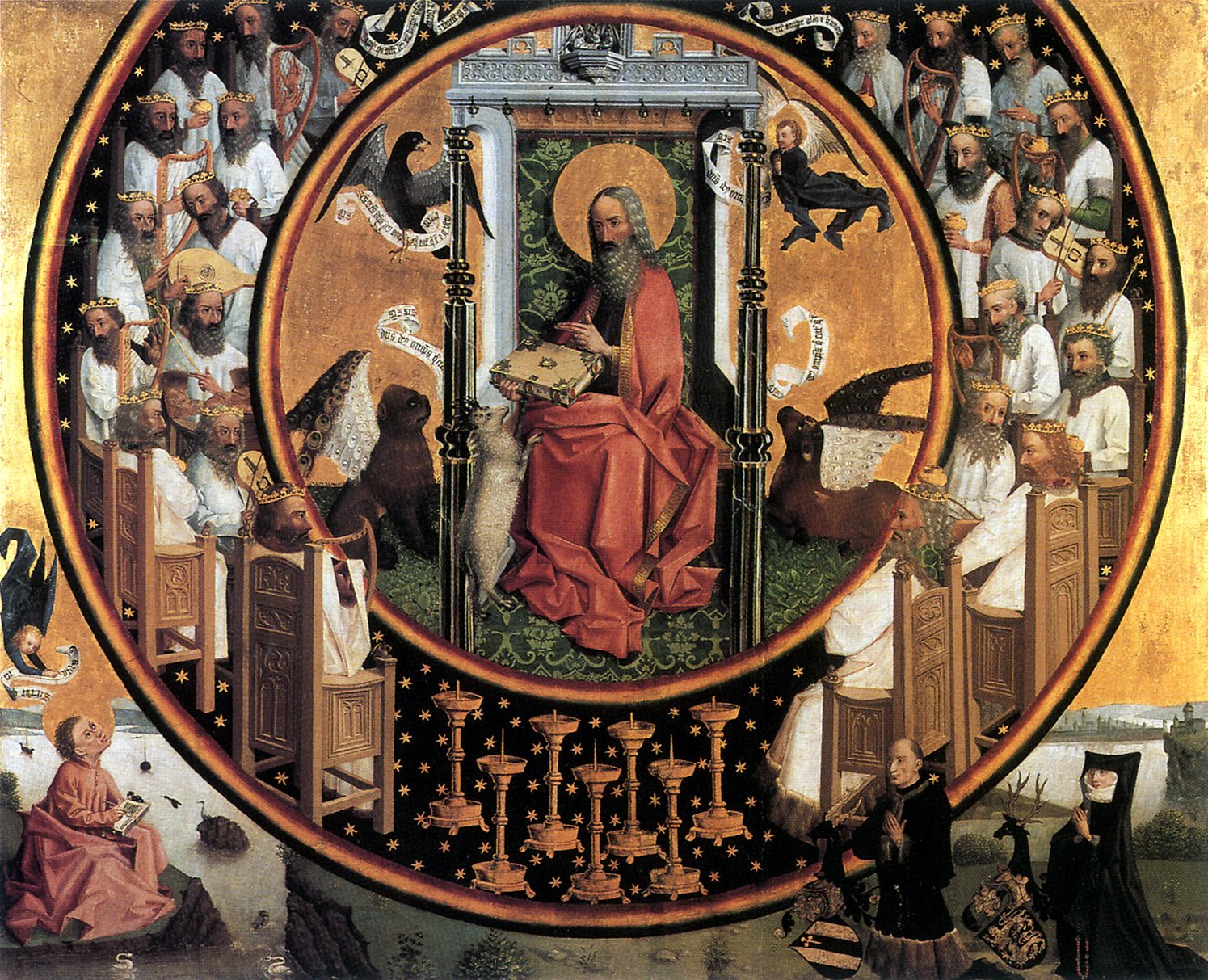
Vision of St John the Evangelist S.XV
Wallraf-Richartz-Museum, Cologne
"Four Living Beings, full of eyes in front and behind, occupy the space between the throne and what is around it. The first Living Being resembles a lion, the second a bull, the third has a face like a man, and the fourth is like an eagle in flight. Each of the four Living Beings has six wings full of eyes around and within, and they do not cease repeating day and night: Holy, holy, holy, is the Lord God, the Almighty, He who was, who is, and who is to come." (Revelation, 4, 6- 8)
THE FOUR LIVING ONES AS A SYMBOL OF THE FOUR EVANGELISTS
Probably the first to relate the living with the four evangelists was St. Irenaeus (2nd century) in his work Against heretics, in which he associated the lion with John and the eagle with Mark, although the works of art have followed another relationship, established by St. Jerome in the fourth century in his Comment to Ezekiel, which was literally translated into art.
According to this text, the man symbolizes MatthewThe story begins with the human genealogy of Christ and focuses on the humanity of Christ.
The lion, animal of the desert, to MarcosThe Gospel begins with John the Baptist, "a voice crying in the wilderness," and places special emphasis on the Majesty of Christ.
The bull, a sacrificial animal, symbolizes Luke.The Gospel of Jesus Christ, who begins to narrate his Gospel with the sacrifice of Zechariah and who focuses above all on the sacrificial character of Christ's death.
And, finally, the eagle symbolizes JohnThe writing is the most abstract and loftiest of the four.
REPRESENTATIONS OF THE TETRAMORPHS IN DIFFERENT CULT PIECES
Below we show you the representation of the man, the lion, the bull and the eagle in different pieces of sacred art, made in order to cover the churches and serve the cult, while serving as an evangelizing and ennobling element of piety.
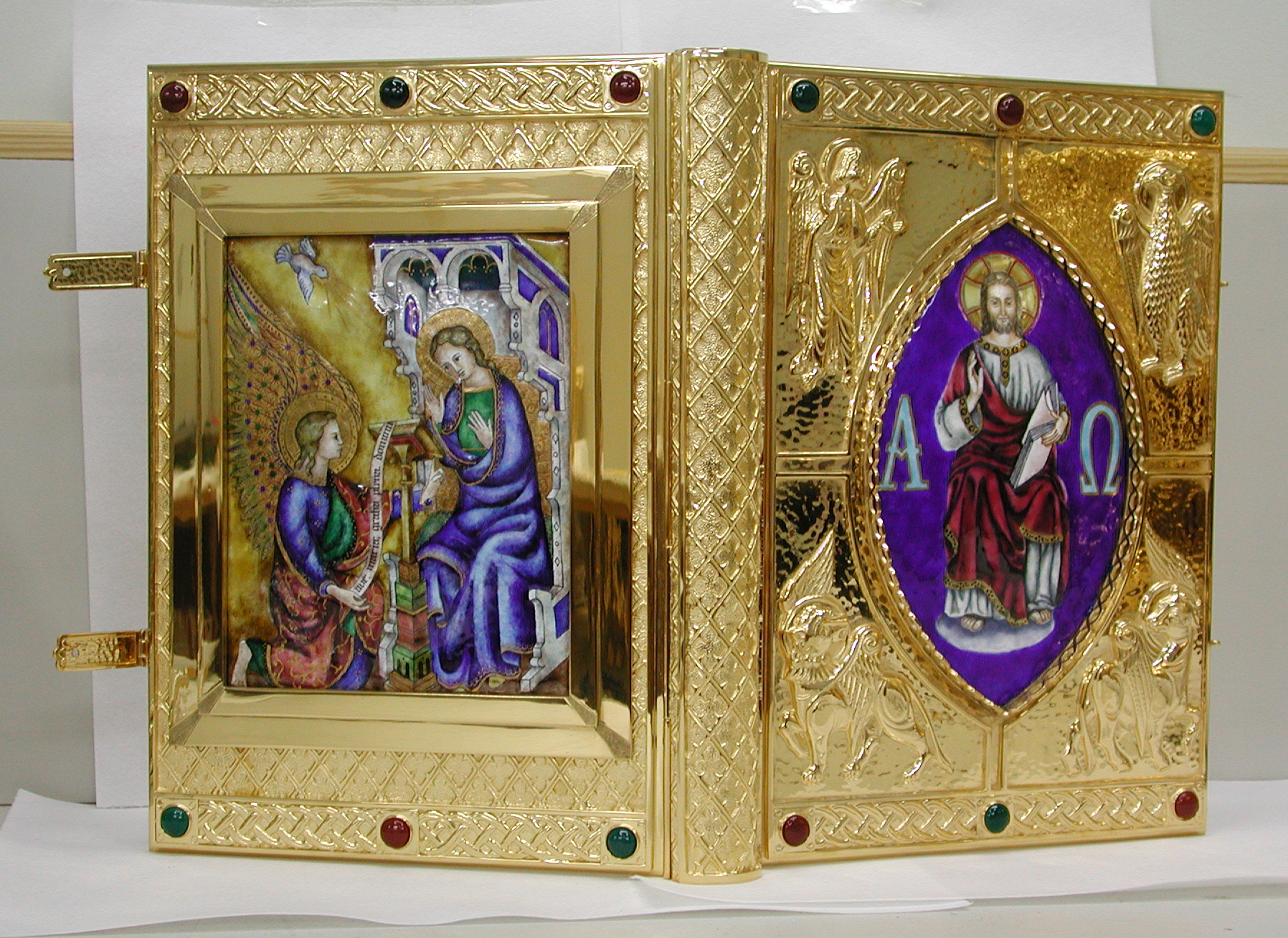
Gospel covers depicting the Pantocrator surrounded by each figure of the Tetramorphos.
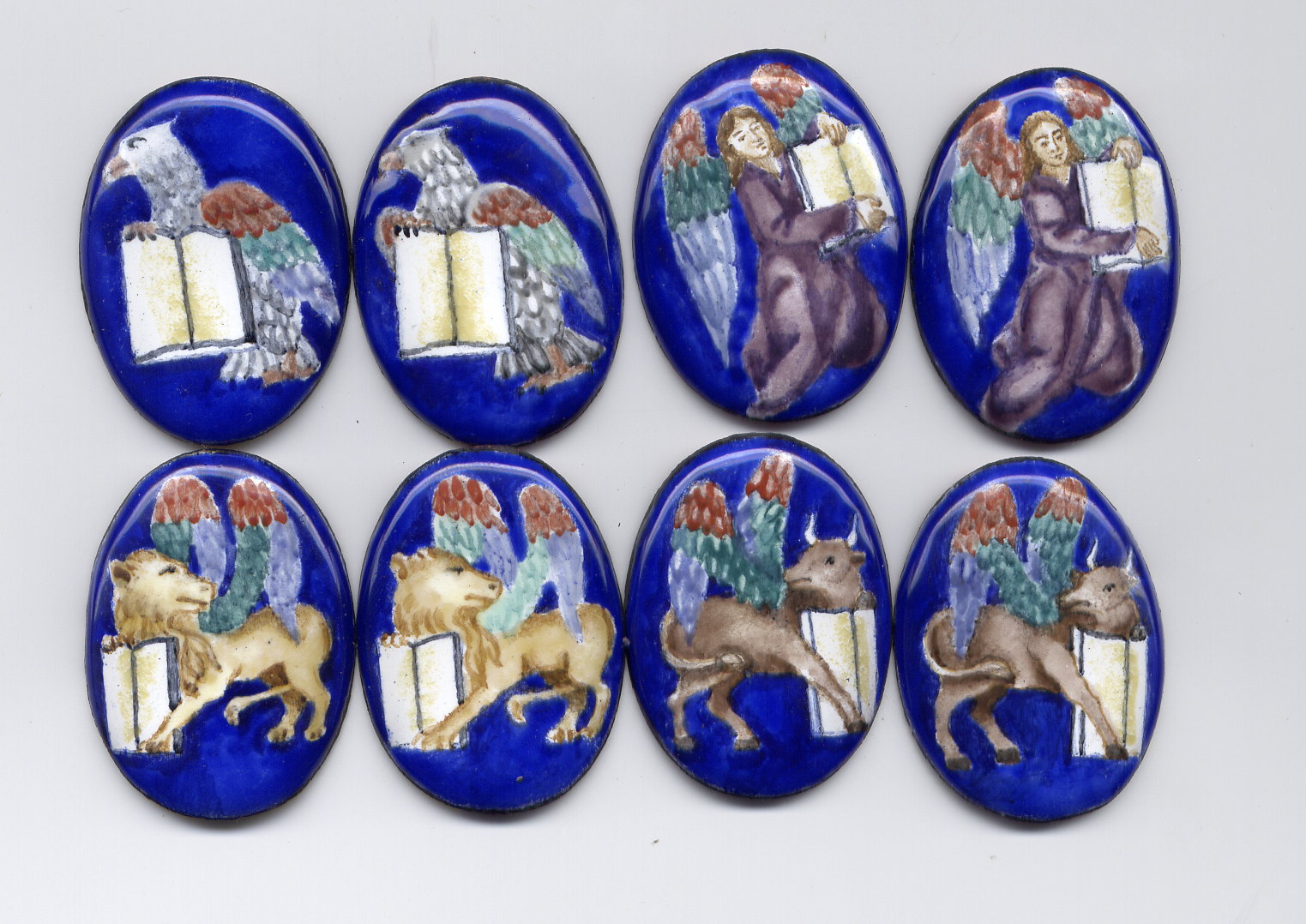
Enamels representing the eagle, the angel, the lion and the bull carrying the gospels.
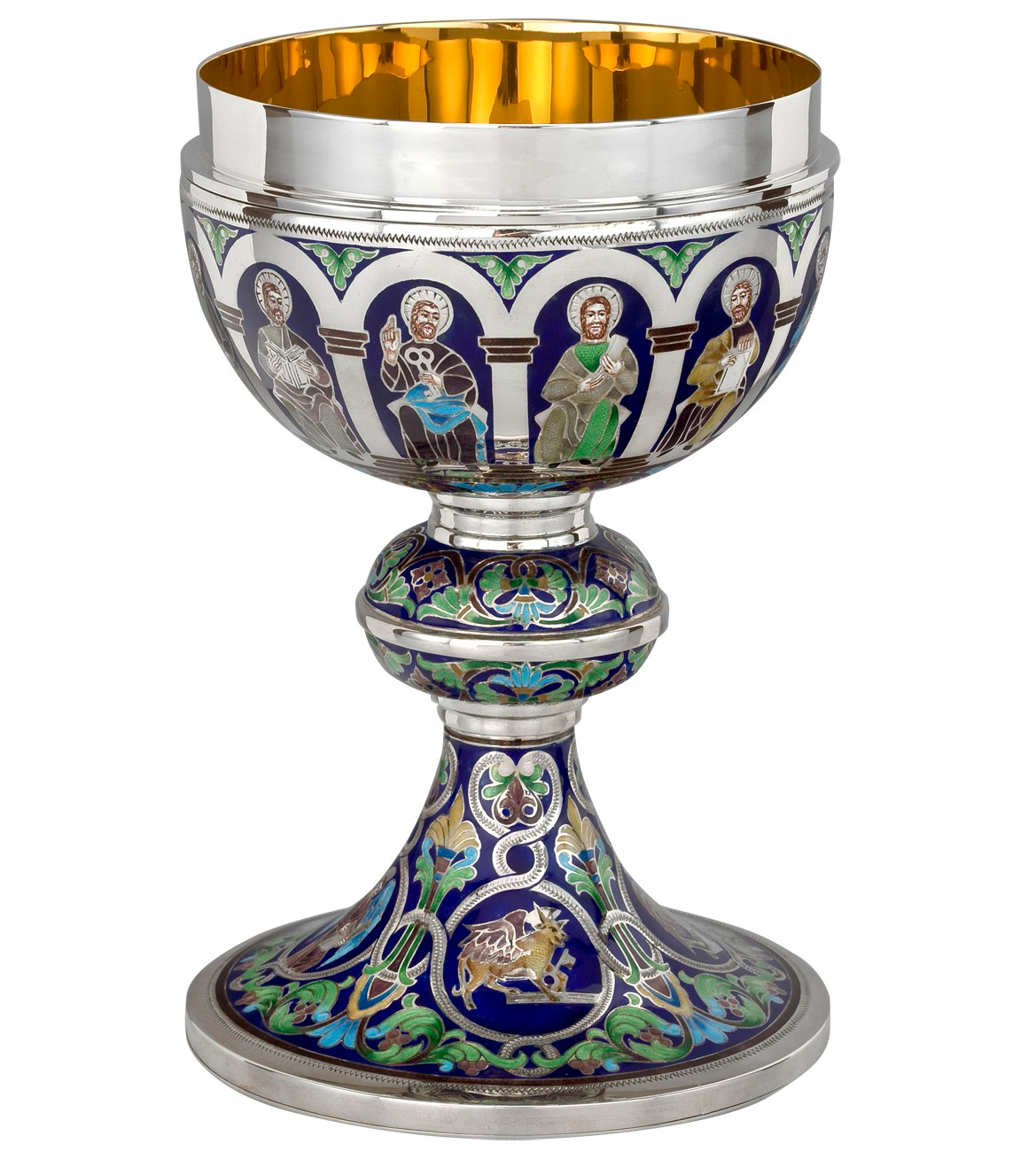
Enameled chalice with the Tetramorphos and other ornamental motifs on its base.
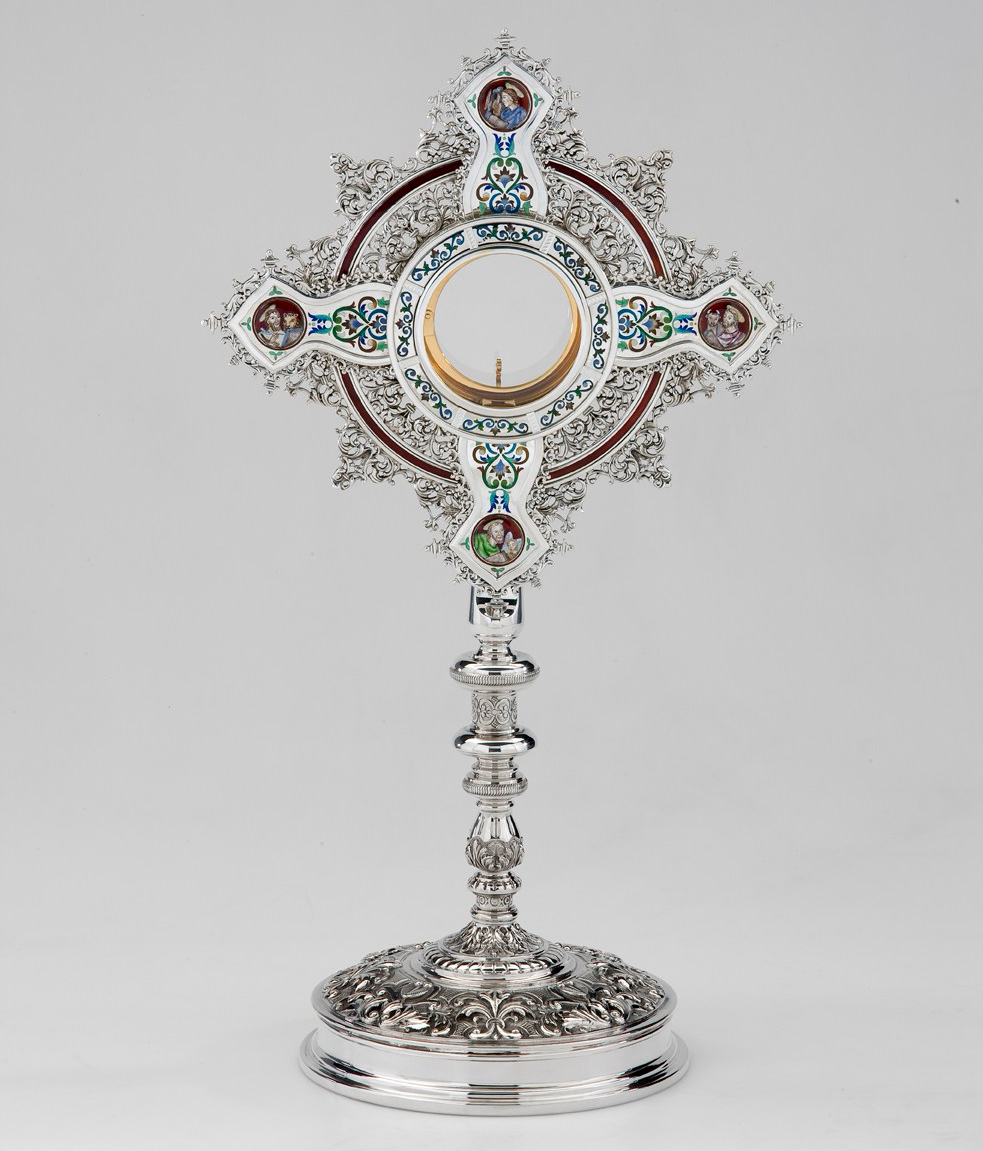
Silver and enamel monstrance. Its four main bursts, arranged in the form of a cross, bear enamels of four angels next to each being of the Tetramorphos.
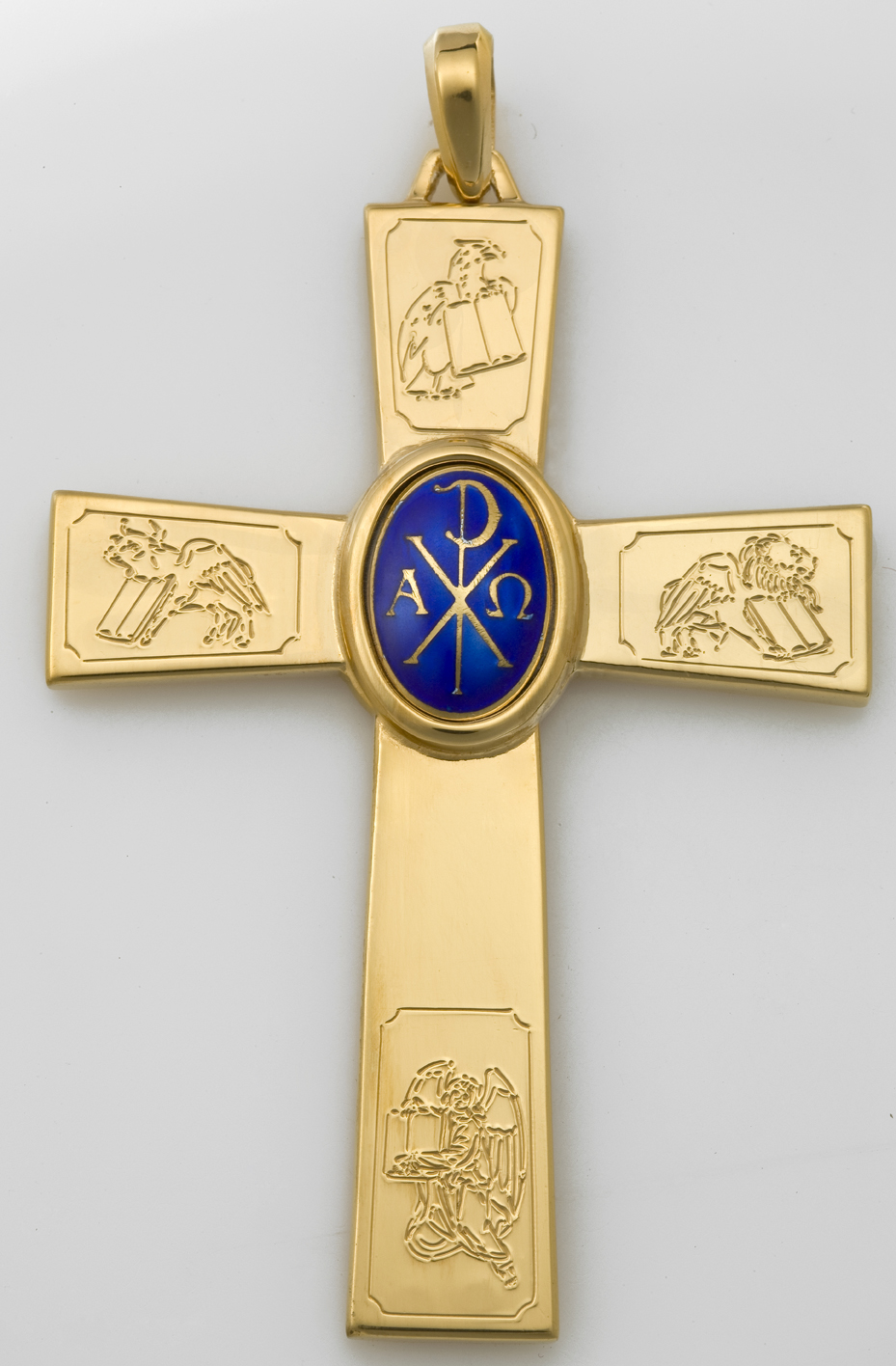
Metal crucifix with the chrism at the intersection of the arms of the cross. It has engraved on each end one of the beings of the Tetramorphos.
